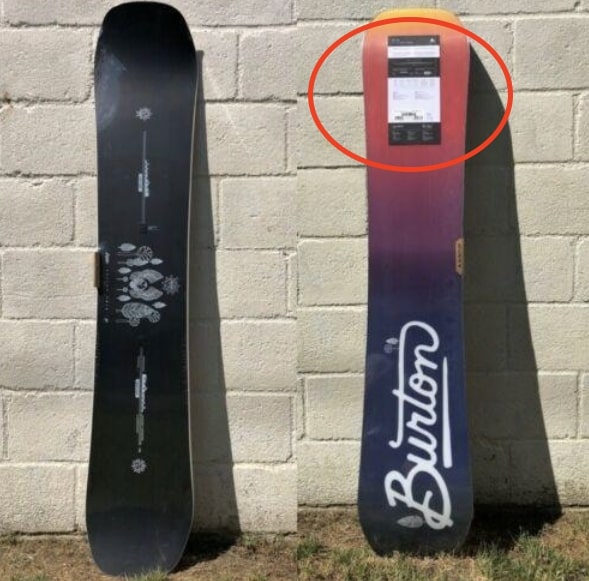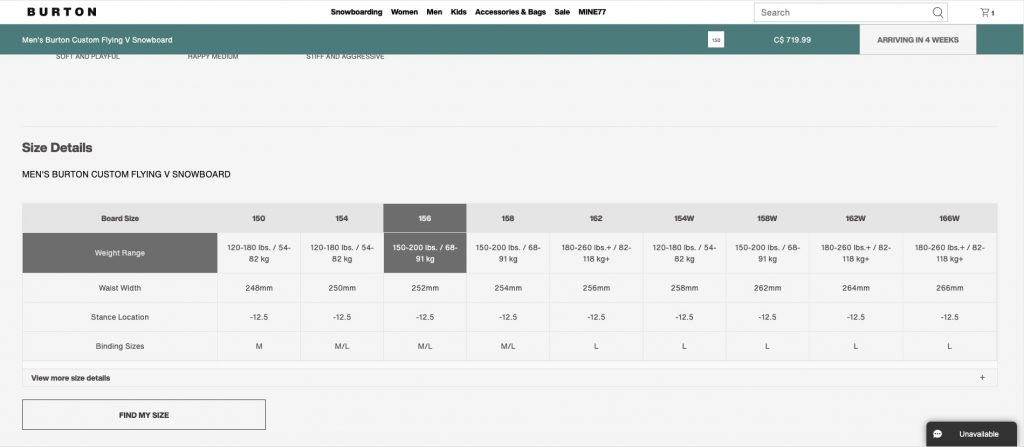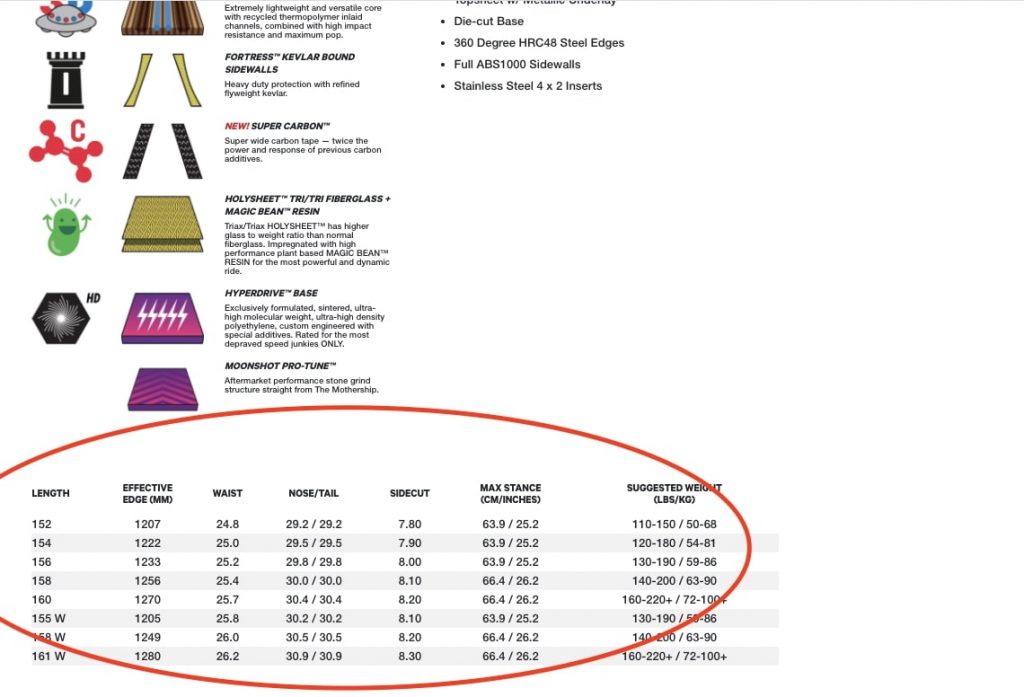So you’re about to buy your new snowboard, congratulations! You’ve probably noticed the obvious that it comes in different shapes and sizes. You’ve probably asked yourself what size should I get? Is there a snowboard size guide? Is there a calculator for this? This article will help you on how to pick the right snowboard size for you!
The “Historical” Answer
What most people will tell you when you’re new and starting is to “pick a snowboard size that stands somewhere between your Adam’s apple (or mid neck for women) and your nose.
As I snowboard more and more, I find the nuances of it all, I don’t subscribe to this anymore and I find it a cop-out to anyone who says this and above all it’s a disservice who’s trying to enter the snowboard world.
While there’s nothing fatally wrong with the suggestion, that big bracket of a size can actually affect your learning and how/where you plan to snowboard.
The More Accurate Answer
“Oh boy, this guy’s about to say it depends”. Close, but not exactly.
I have a short/quick answer and I have a more detailed breakdown as to why.
The quick answer is that each snowboard (read: snowboard, as in individual snowboards, not snowboard brands) has its own size guide and these size guides are easily and quickly available to you every time you shop online or offline. Your eyes have probably seen these many times already, you just haven’t paid attention to it yet.
If you’re shopping offline/in person in your local shop (support local!) and you’re eyeing a snowboard, you’ll notice that it’s wrapped in plastic. If you flip the snowboard (so you’re looking at the base/under belly of the snowboard) there’s almost always a big sticker on it! It contains basically all the info of that board: name, size, camber profile, which it is good for, ratings, flex, etc etc. There are lots.

I don’t have a more hi-res photo but in that large sticker, you’ll notice a big table/grid, a-la Excel. You can’t miss it. That folks, is your size guide. Now look for your weight (yes weight, not height) and then you can see which snowboard size is for you. Done.
If you’re shopping online, you’ve probably skipped it many times but there’s ALWAYS a size guide/chart everywhere.
Size guides are always available for all (brand new) snowboards being sold. It’s like the “Nutritional Facts” of snowboards. Notice also that (BIG) snowboard brands are crosschecking the size with your weight, not height? Told you. I’m not making that up. I’ll explain shortly why.
So if someone’s oversimplifying your question and giving you that “historical” response, Yea nah mate.
FAQ
“Why is it then based on weight and not height?”
Well first of all if you think about it, you just assumed it should be based on height. Think about it. I get it though: snowboard height/length, your height, maybe there’s some reference. But you never really had a practical/physics reason why you thought height.
Imagine a 3 foot snowy field. If you drop a leaf (a very light object), the leaf just stays on top. If you drop yourself though, you sink and make an imprint. The physics term eludes me right now but basically there’s the occurrence that if you don’t want an object to sink, you can spread and expand the surface area of the said object and it’ll float (without having to manipulate weight).
Snowshoes work in the same concept.
Skiers have these too. If they want a powder snow, they’re essentially just fatter skis 😅 (well, that’s among other things. There’s taper, etc etc)
“Why is it important to choose the right size of ski / snowboard? Can’t I just eyeball it?”
No one’s stopping you but that’s like going to shop for clothes and just eyeballing things. It’ll work, but it’ll probably be too tight/loose and you’ll be uncomfortable and it’ll just look off.
With different types of snowboard sizing, it’s not just the length of the board that changes. The width increases proportionally, the side cut, etc.
So if I eyeball it and get a way longer board than what I should be getting for example, it’ll be difficult for me to ride properly and enjoy. If the length is too long and the width is too, I will have trouble switching from heel and toe edge. If the board is too long, it’ll be hard for me to steer and swing my board left and right. It’s easier to spin a pen on your hand than swinging a staff around your body.
Volume Shifted Boards (intentionally short and fat by design)
Some snowboards are short by intent and design btw. It all goes back to the physics explanation I said above. What’s keeping you afloat is the surface area (the size) of your snowboard. It doesn’t really matter what form or shape it is, that’s why some board manufacturers make these. These are boards essentially spreading the length that they cut off and spreading those along the width of the board.
Some volume shifted board examples are:
Lib Tech T.Rice Orca Mens Snowboard Sz 150cm or
Ride Warpig
I ride around 156 for all mountain but as you can see from the Ride Warpig website, they’re suggesting that you go 6-10cm shorter than what you normally would (so I’d get 146cm).
Why do they design short and fat boards? Better at trees, easy to maneuver, accommodating for big feet peeps.
So imagine if I was new and I was just eyeballing it and I fell in love with the Ride Warpig AND I got a 156? It’d be operating an extremely wider-than-necessary board!
Size by Purpose
Sizing can also vary by your intent and how you’d want to ride. As mentioned already, if you enjoy going through the glades/trees, it’s ideal that you have a nimble board (so that means shorter). You want to change directions immediately to avoid trees etc. Terrain park people like just-a-little-bit shorter boards too because if you’re hitting jumps and you’re doing spins, it goes back to the pen/staff analogy: easier to spin a pen than a tall staff.
Personal preference
Lastly of course once you’ve considered all the points in this article and you’ve gained experience, know the type of rider you want to be, know the types of terrain you want to tackle, then yes go for it. Pick whatever based on your personal preference!




